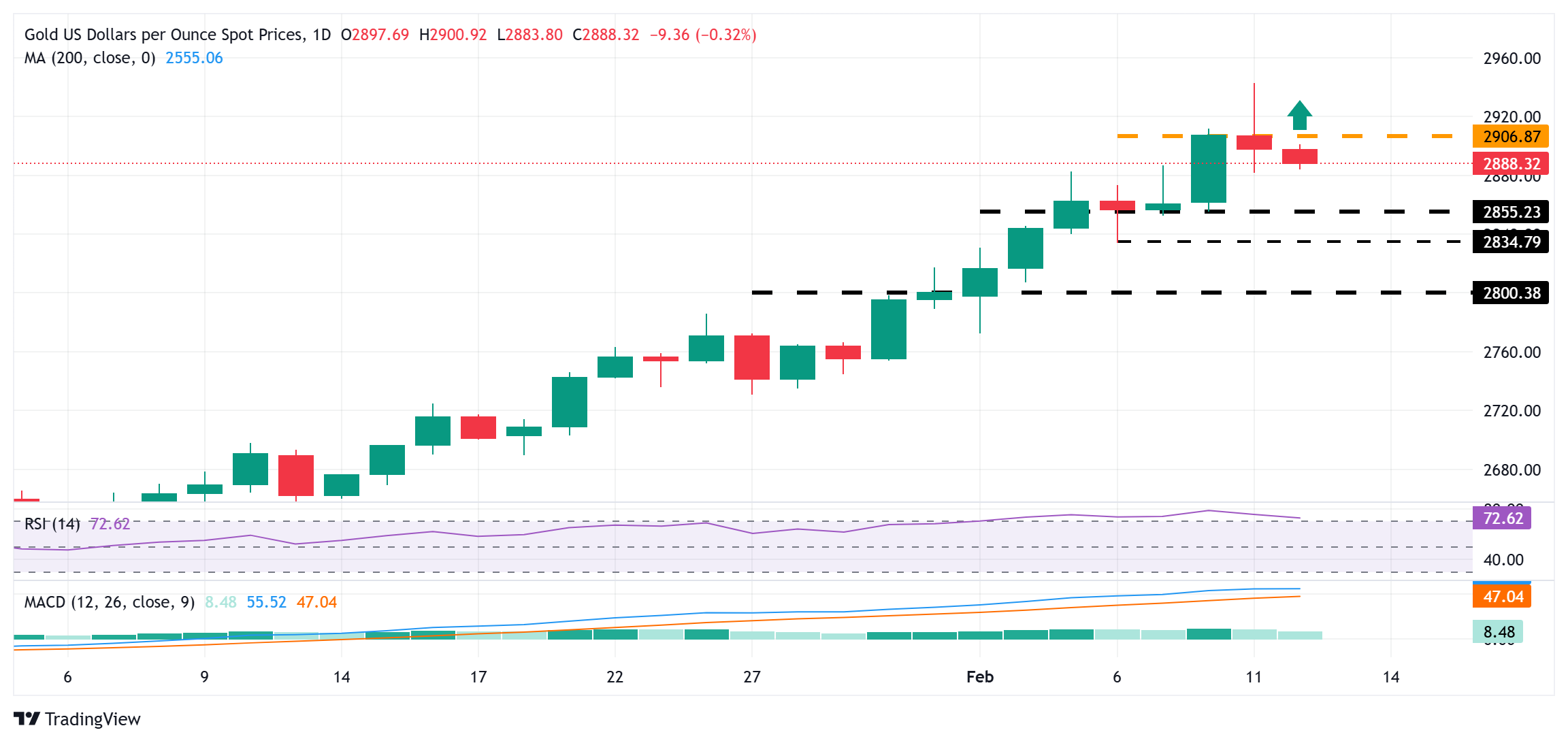Gold prices remain pinned below $2,900 per ounce, struggling to gain momentum as investors assess the Federal Reserve’s monetary stance and broader economic risks. While the precious metal faces pressure from a resilient U.S. dollar and firm Treasury yields, its downside appears contained by ongoing geopolitical and inflation concerns.
The Federal Reserve’s hawkish messaging has kept markets cautious, with traders scaling back expectations for aggressive rate cuts this year. Strong U.S. economic data and persistent inflation have reinforced the case for higher-for-longer interest rates, making non-yielding assets like gold less attractive. The dollar’s strength has further dampened demand, keeping gold prices in check.

Gold US Dollar 1-D Chart as of February 12th, 2025 (Source: TradingView)
Despite this, safe-haven flows continue to offer support. Renewed uncertainty in global markets, including lingering geopolitical risks and concerns over slowing economic growth in major economies, has helped gold retain its appeal. Investors remain wary of potential volatility in equities and bonds, sustaining demand for the metal as a hedge against financial instability.
Gold’s ability to break past $2,900 will depend on upcoming macroeconomic developments, particularly inflation data and central bank policy cues. A softer-than-expected inflation print or any sign of a dovish shift from the Fed could provide the momentum needed for an upside breakout. Conversely, stronger economic readings could reinforce Fed tightening fears, capping gains.
For now, gold remains caught between competing market forces—pressured by a strong dollar and higher yields but supported by safe-haven demand. Traders will closely watch economic indicators and central bank statements to gauge whether the metal can regain bullish momentum or extend its consolidation below key resistance levels.













